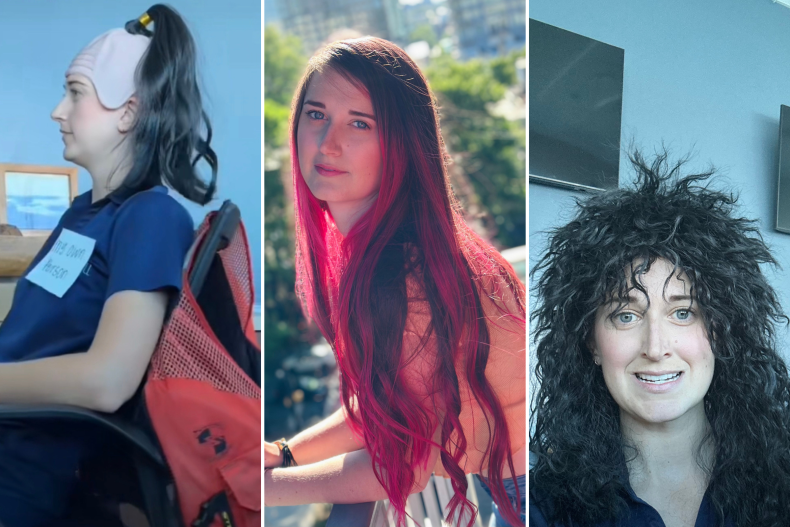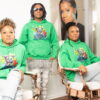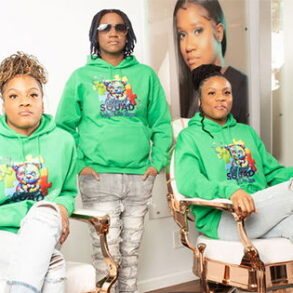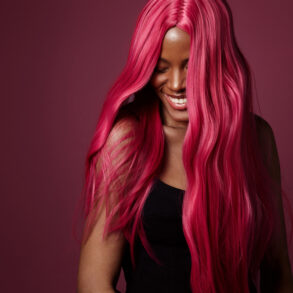In this day and age, many people probably think one’s hair will not affect their employment. However, Emily Benschoter, 29, has been forced to wear wigs to work to cover her pink hair.
“Dying my hair for a job I work at for 40 hours per week wasn’t an option,” Benschoter told Newsweek. “I am a self-expressive person and I feel very confident with pink hair so I came up with a solution to keep the job and my hair.”
Benschoter explained she landed a front-of-house role in the hospitality industry without a face-to-face or video interview. Therefore, her new manager had no idea what she looked like but she decided to mention her hair ahead of her first shift to see if it was allowed. It turns out, pink hair is a no-go for staff, so Benschoter suggested wearing a wig.
Ever since, Benschoter, from Georgia, has shared videos showcasing her wigs on TikTok.

Emily Benschoter/TikTok/@emuhleeebee
One video racked up more than 574,000 views and 40,000 likes, the on-screen text saying: “When you have pink hair but corporate does not approve so you wear terrible wigs.”
Speaking to Newsweek, she said: “It’s dehumanizing that I can’t be accepted at face value because my hair is a non-traditional color. It’s so superficial that my hair color is an obstacle.
“I prefer my pink hair, it’s me to my core. So now I purposely pick wacky wigs which is quite funny.”
“The worst the wig, the better,” she said. “It is a way to open up the conversation with the customers who think it is insane that I have to cover my pink hair.”
Workplace conflict over hair has been an ongoing issue for years, especially for Black people. In 2019, the CROWN Act was created, which stands for Create a Respectful and Open World for Natural Hair. The Californian law was made to protect against “discrimination based on race-based hairstyles by extending statutory protection to hair texture and protective styles such as braids, locs, twists, and knots in the workplace and public schools.”
However, Benschoter’s hair isn’t naturally pink so the provisions of the act do not apply to her.
Newsweek reached out to Gena Cox, an organizational psychologist, to discuss colored hair in the workplace.
Cox, who works as an executive coach, told Newsweek: “Companies focus disproportionately on employees’ visual characteristics when they have a preconceived notion of what the ‘ideal employee’ looks like and when they believe their clients and customers share that bias.
“This is a longstanding problem that exists even when some people show up with their natural hair; for Black women, it has even been necessary to get a law passed, the CROWN Act, to enable them to wear the hair that grows out of their scalps. Colored hair generates strong reactions for similar reasons: some associate it with being ‘different’ or less ‘professional,’ or only suitable for certain jobs, such as creative arts, or as ‘distracting’ to those who do not like such visible signs of self-expression.”
Cox, the author of award-winning book Leading Inclusion, added: “The bottom line is rejection of employees’ colored hair is a form of bias and a sign that the workplace is not inclusive.”
TikTok users seem shocked to discover Benschoter’s workplace allows the wacky wigs but not pink hair.
One user questioned: “They think this is better?”
“Malicious compliance,” commented another.
“Please tell me that the SECOND you clock out, you’re carrying your wig in your hand to make it SO CLEAR,” said another.
Have you had a workplace dilemma? Let us know via life@newsweek.com. We can ask experts for advice, and your story could be featured on Newsweek.
This post was originally published on this site be sure to check out more of their content.






